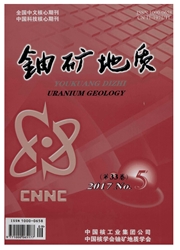

 中文摘要:
中文摘要:
核工业216大队近年来在新疆准噶尔盆地卡姆斯特地区发现了一处重要的铀矿产地。文章在前人研究的基础上,综述了卡姆斯特地区的地质特征,分析其铀源、构造、古气候、岩性-岩相组合、西山窑组与头屯河组不整合面、还原性物质等对铀矿形成的控制因素,认为区内中侏罗统头屯河组辫状河砂体为层间氧化带砂岩型铀矿的主要赋存岩相,喀拉萨依单斜带以东西山窑组与头屯河组不整合面附近是煤岩型铀矿的有利发育部位。
 英文摘要:
英文摘要:
In recent years, the Geologic Party No. 216, CNNC found an important uranium mineral occurrence at Kamusite area in Junggar basin. On the basis of previous studies, this paper summarized the geology characteristics, analyzed the uranium formation controlling factors such as uranium source, tectonic evolution, paleoclimate evolution, lithology-lithofacies combination, unconformity interface and the reducing substances. The research suggested that the braided river sand body in the middle Jurassic Toutunhe formation was the main host for interlayer oxidation uranium mineralization and the favorite area for coal rock type uranium mineralization was near the unconformity interface between Xishanyao formation and Toutunhe formation to the east Kalasayi monocline.
 同期刊论文项目
同期刊论文项目
 同项目期刊论文
同项目期刊论文
 期刊信息
期刊信息
